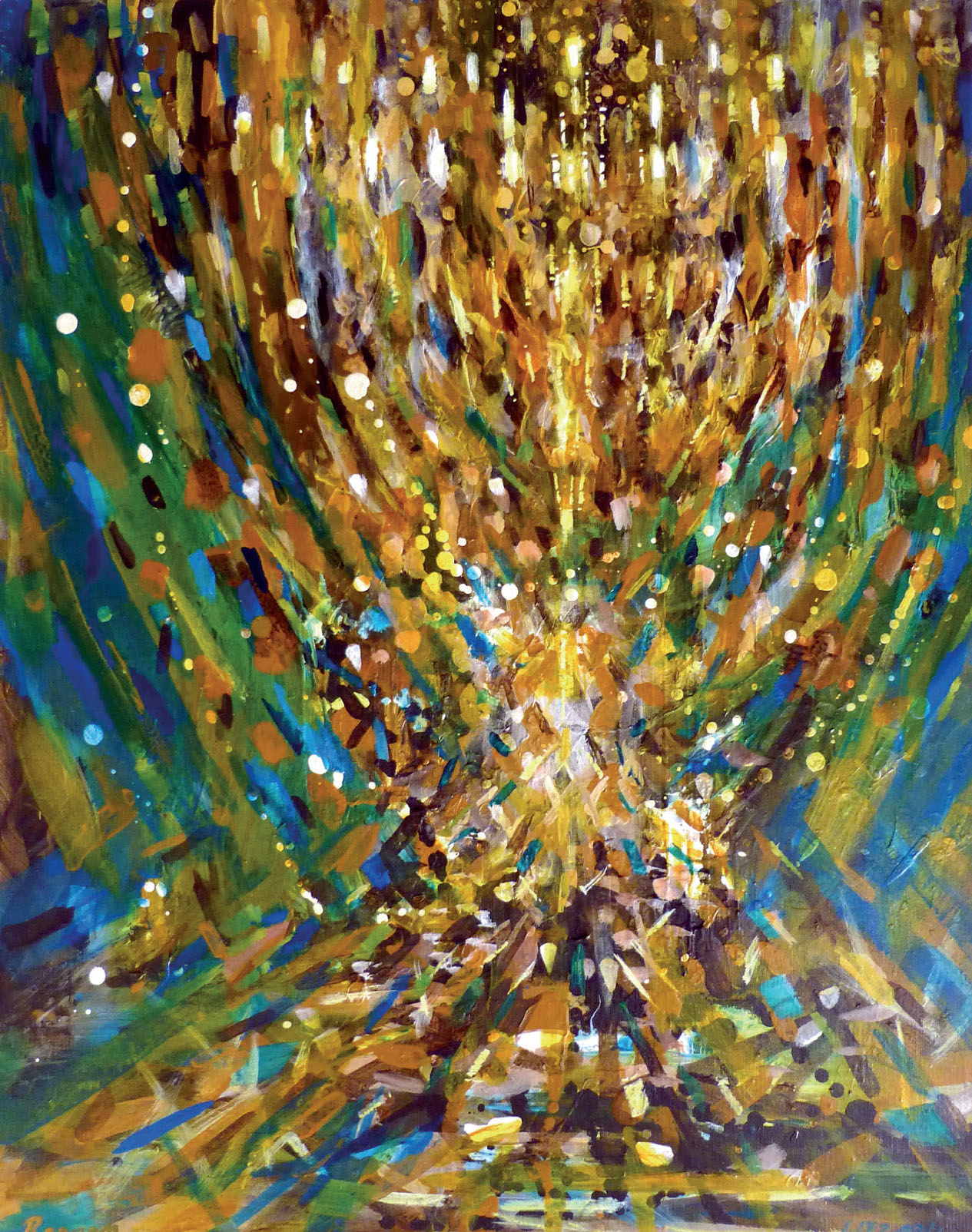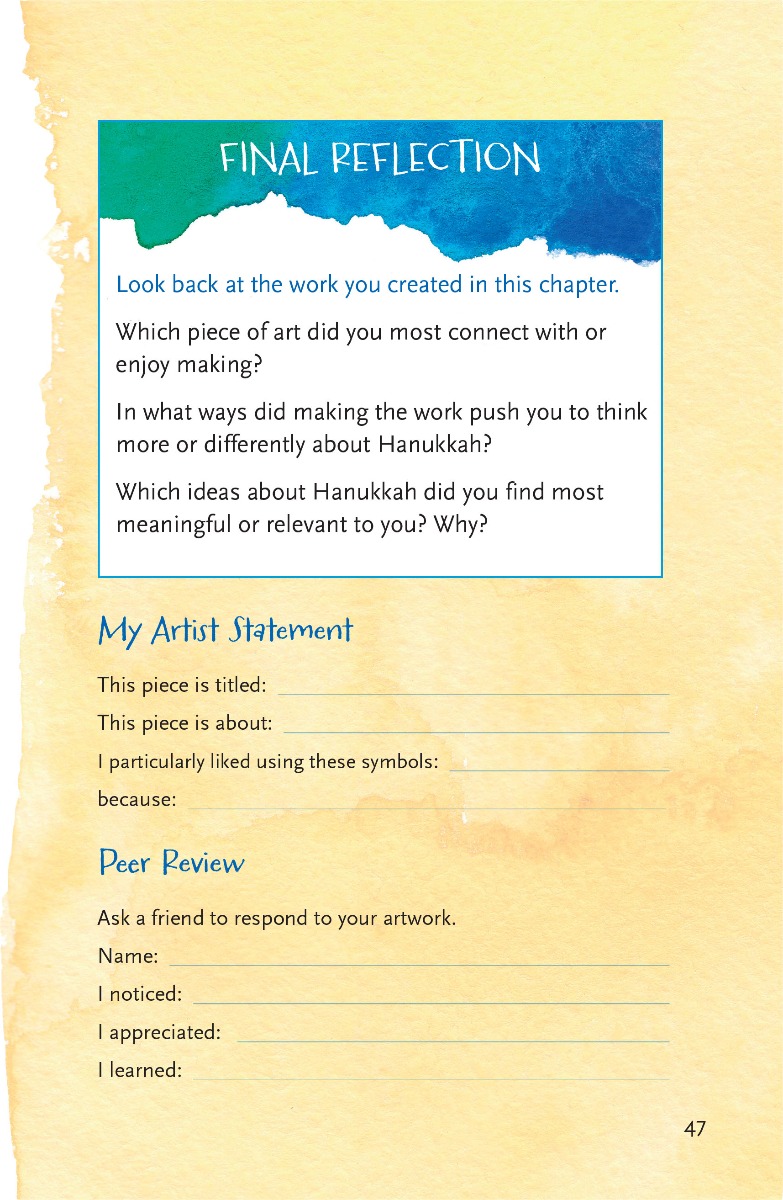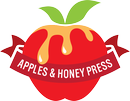Teaching Hanukkah Through Art

Have you ever had to pick the color of the paint for a room in your house? Choose tiles for your bathroom? Design a handout or flier for your classroom? Do you take photos and post them on social media? You are an artist.
All the students in your classes are artists, too. They post, draw, write, share. That’s art creation. Art is a part of us all.
There’s a place for crafts in the classroom, but art can also be used to teach big ideas to create rich learning. Think of the word "art" expansively: painting, drawing, drama, music, storytelling, poetry — all of it.
This notion of teaching the underlying Jewish ideas and values of the holidays is the approach behind Make, Create, Celebrate: Jewish Holidays Through Art. This new course for students in grades 4-6 use art as a lens to examine the big ideas of each Jewish holiday.
Here's an example of how to do it:

PART 1: See/Think/Wonder
The first three words of the Torah are “Beresheit bara Elohim” — “In the beginning, God created.” God is, first and foremost, a Creator. The fundamental nature of the Divine is to be creative.
Jewish tradition teaches that we are created b’Tzelem Elohim — in the image of the Divine. We too are artists, co-creators.
Look at the painting by Yoram Raanan, which appears in the chapter about Hanukkah in Make, Create, Celebrate.
What do you see? What colors does the artist use to create light? What do you think? What do you wonder?
This See/Think/Wonder Routine is based upon Harvard University’s Project Zero, a research-based organization that has developed a collection of thinking routines. Elizabeth Diament, the Senior Educator at the National Gallery of Art and consultant for Make, Create, Celebrate, has written that, “Thinking routines have the capacity to activate student’s deep thinking by privileging their own ideas as a valuable source of information, getting them personally involved, and using questions to drive learning and uncover complexity.” Deep learning and personal connection to Jewish subjects. This is pretty much our goal in religious classrooms, isn’t it?
Here are some more questions you can explore using this painting:
• Do you see a menorah? How many menorahs? Is it one or many? Why would the artist want to show one? Why many?
• Do you see shadows? Light? From which direction is the light coming? Or is it coming from within? What does light have to do with Hanukah, both literally and symbolically?
• What colors do you see in the menorah painting? How would you describe them? Do the colors make you think of any feelings? Do those feelings connect to Hanukkah in some way?
We thought very carefully about what pieces to choose to include in Make, Create Celebrate, but you can find your own art and do the same thing. Visit the websites of the Jewish Museum or the Metropolitan Museum of Art, or use the art in your synagogue to do the See/Think/Wonder Routine. Try it, for example, with the Ark, Ner Tamid, or a mezuzah case.
PART 2: Creating Art
Give students the opportunity to create their own art, such as scratch art, to show them how they can spread light or goodness in the world. Here's how: Using oil pastels or markers, have students fill in a blank paper with different colors or in a pattern. Then, using a black oil pastel (NOT a marker), cover the entire square with black. Finally, using a fine-point tool (toothpick, or plastic fork or knife), have students scratch the drawing into the black pastel. When they scratch out the black, the colors beneath should shine through.
Ask them their reaction to seeing the vibrant colors emerge from under the blackness.
PART 3: Reflecting on Art
The final step of creating a piece of art is reflecting on it. Each chapter in Make, Create, Celebrate ends with a reflection, where students can make their statement about their intent in creating art and what it means to them.
Then have their trade their art and statement with a partner and fill out the peer review section about their art. They trade back when both have finished.
Ask: How did it feel to share your work? Did it make you feel nervous? Why? It is important to develop the muscle of getting out of our comfort zones and being resilient. For students to express themselves fully, we need to create a safe space in our classrooms, where the children feel comfortable sharing and exchanging ideas. Sharing art is a great way to practice that and exercise that muscle.
Don’t forget to subscribe to our newsletter and connect with us on social media!





